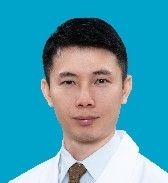Cardiac rehabilitation is a medical rehabilitation concept based on comprehensive medical assessment and centered around the “Five Prescriptions of Cardiac Rehabilitation” (pharmacological prescription, exercise prescription, nutritional prescription, psychological prescription, and intervention for unhealthy lifestyles). It employs various coordinated and targeted interventions, including exercise assessment and training, dietary guidance, lifestyle advice, regular medication adherence, periodic monitoring of various indicators, and health education, to improve patients quality of life, enable their return to normal social life, and prevent cardiovascular events.
The Cardiac Rehabilitation Department is a specialized sub-specialty integrating assessment, prevention, treatment, and rehabilitation, focusing on whole-life-cycle management. It boasts a high-quality team composed of cardiologists, rehabilitation therapists, nutritionists, psychological counselors, pharmacists, and professional nurses and caregivers.
1. Scope of Diagnosis and Treatment
The Cardiac Rehabilitation Department offers a wide range of diagnosis and treatment services, including but not limited to the following conditions:
(1) Rehabilitation for coronary heart disease and related post-treatment conditions, such as myocardial disease management, rehabilitation assessment, and treatment for patients after coronary stenting, coronary artery bypass grafting, myocardial infarction, heart valve replacement or repair, and heart transplantation.
(2) Myocardial disease management, rehabilitation assessment, and treatment for cardiomyopathy, atherosclerosis, arrhythmia, heart failure, valvular heart disease, and congenital heart disease, as well as related conditions suitable for cardiac rehabilitation.
(3) Rehabilitation for related conditions suitable for cardiac rehabilitation and for cardiovascular diseases accompanied by pulmonary, cerebral, renal, and neuromuscular dysfunction.
(4) Health management for individuals with coronary heart disease risk factors, such as hypertension, diabetes, obesity, and hyperlipidemia.
2. Diagnostic and Therapeutic Characteristics of the Department
(1) Comprehensive Assessment and Treatment: Through a series of rehabilitation assessments, such as cardiopulmonary exercise testing and the six-minute walk test, we comprehensively understand patients’ cardiac function and overall physical condition, enabling us to tailor individualized rehabilitation plans for them.
(2) Multidisciplinary Collaboration: Cardiac rehabilitation not only involves specialized knowledge from cardiology but also integrates multidisciplinary content such as exercise therapy, diet therapy, physical therapy, and psychological rehabilitation, providing patients with comprehensive treatment and care.
(3) Advanced Equipment and Instrumentation: The Cardiac Rehabilitation Department is typically equipped with advanced cardiac rehabilitation equipment and rehabilitation exercise assessment systems, including advanced cardiopulmonary exercise testing systems, portable multi-parameter health monitoring devices, non-invasive cardiac output measurement systems, and pneumatic external counterpulsation devices, to ensure precise and effective treatment for patients.
(4) Customized Rehabilitation Programs: Based on patients specific circumstances, such as age, condition, and physical status, we tailor rehabilitation programs for them, forming the disciplinary advantage and characteristic of “precision rehabilitation.”
(5) Focus on Mental Health: Cardiac rehabilitation not only focuses on patients’ physical health but also on their mental health and social adaptability. Through close collaboration with patients and their families, we provide services such as psychological support and emotional management to help patients better integrate into society.
3. Departmental Programs
(1) Cardiopulmonary Exercise Testing (CPET): This test aims to assess patients’ cardiopulmonary function and exercise tolerance. Based on the results, personalized exercise prescriptions (including exercise type, duration, intensity, and frequency) can be formulated. CPET is internationally recognized as the “gold standard” for assessing cardiopulmonary function and is widely used in various clinical settings.
(2) Exercise Rehabilitation: This program includes aerobic training, resistance training, balance training, flexibility training, etc. All training sessions are conducted under electrocardiographic and blood pressure monitoring to ensure safety and effectiveness.
(3) External Counterpulsation (ECP): ECP is a safe and effective non-invasive mechanical assist device for circulation, known as the "green bypass" or the "lying marathon." It aims to improve vascular endothelial function, blood circulation, and metabolism.
(4) Portable Six-Minute Walk Test: This test can be used to evaluate the exercise capacity and treatment effectiveness of patients with chronic obstructive pulmonary disease (COPD) and heart failure. It provides a basis for formulating exercise prescriptions and assessing the effectiveness of exercise rehabilitation, making it a simple, easy-to-perform, and safe examination method.
(5) Body Composition Analyzer: This device rapidly, easily, non-invasively, and safely analyzes the main components of the human body.
(6) Non-invasive Hemodynamic Monitoring: This test provides immediate, objective, and quantitative assessments of the heart’s pumping ability, offering significant guidance for the diagnosis and precise treatment of cardiovascular diseases.
4. Benefits of Cardiac Rehabilitation
(1) Short-term Benefits:
Control of cardiac symptoms, shortened hospital stays, improvement in patients’ psychological state, restoration of physical strength and confidence, and reduction of cardiovascular complications.
(2) Long-term Benefits:
Control of risk factors for cardiovascular diseases, enhancement of cardiac functional reserve, reduction in the risk of recurrent infarction, decrease in morbidity and mortality rates, delay in the progression of atherosclerosis, and maintenance of a lifelong healthy lifestyle.






